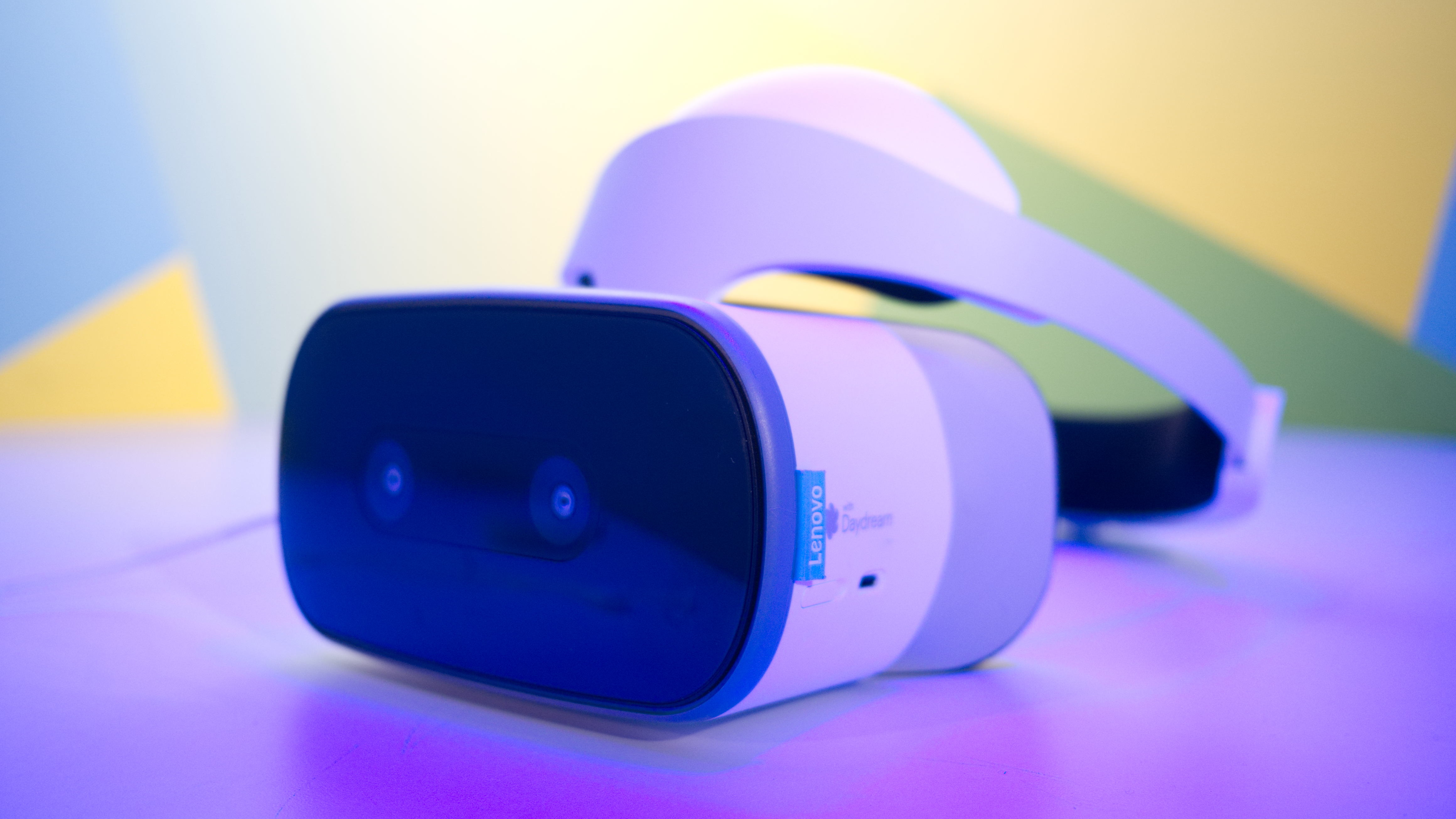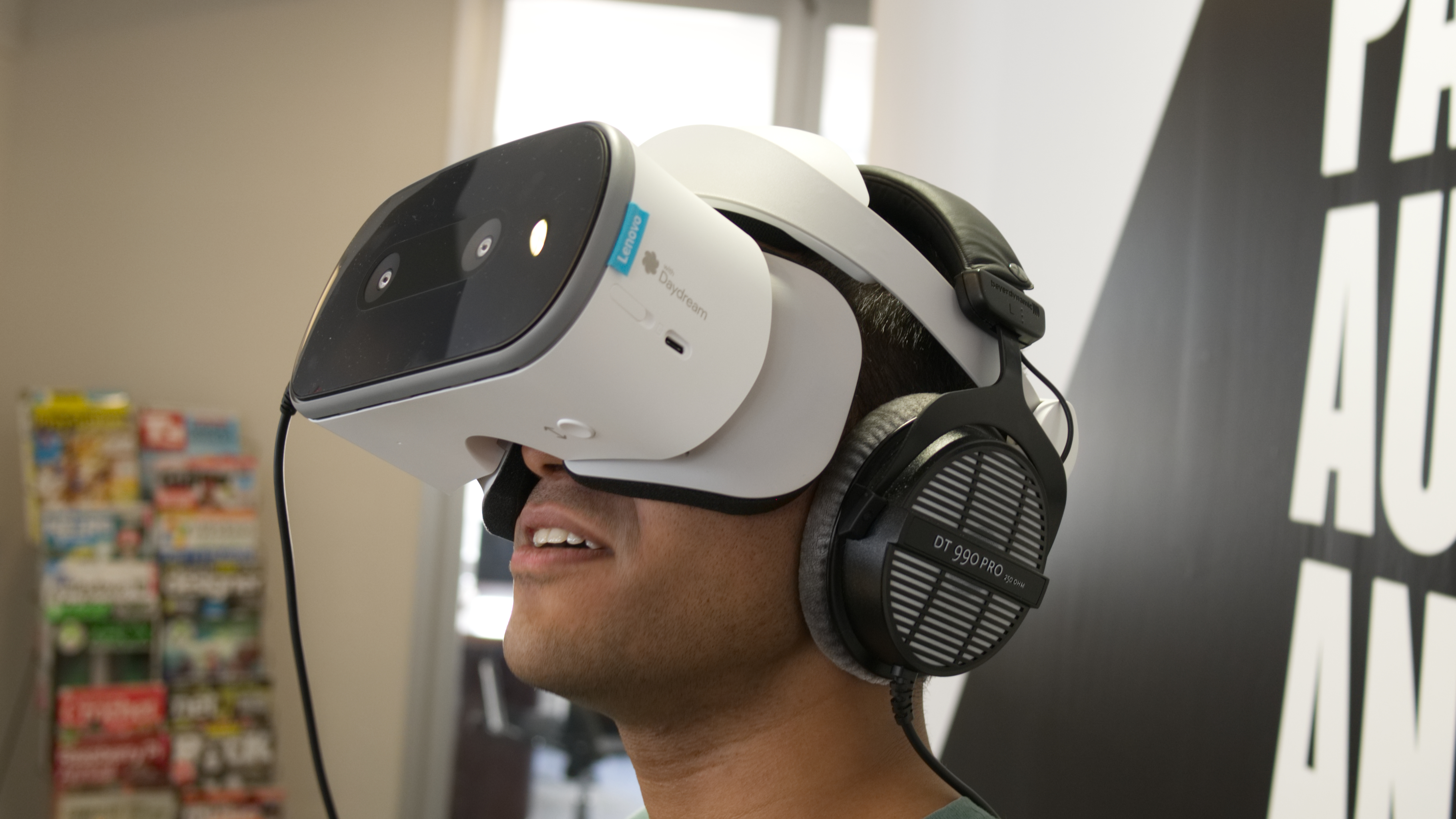Why you can trust TechRadar
Loaded with the Snapdragon 835 chipset, 4GB of RAM, and Daydream OS, the Mirage Solo is ready to get down with the latest and greatest VR apps and games – even those that aren’t out just yet.
During our review, we tried a slew of WorldSense-enabled experiences, some old (the remarkably clever Virtual Virtual Reality and the Metroid Prime-esque Eclipse: Edge of Light) and some new (Blade Runner: Revelations, and The Chinese Room’s narrative-driven So Let Us Melt). Lenovo says that there will be 70 titles at launch that take advantage of your environment.
- Dive in with the best Google Daydream apps and games

It doesn’t take WorldSense to make a game good, and that’s not all it’s for, as we discovered with its safety features. But it absolutely elevates the mobile VR experience to a new level for both new and older games. In Blade Runner: Revelations, a fairly well-made experience on its own, I got a lot more out of the experience by walking around the environment and analyzing clues and characters up-close. That’s not to say that every app or game will be enriched because of it, and the WorldSense safety bubble felt frustratingly small at times, but still there’s huge potential here to make magical experiences.
The Mirage Solo runs smoothly, due in part by its smartphone-esque hardware chops, but also by the fact that it’s running on its own operating system without worrying itself about phone calls and extraneous apps in the background. All of the resources are dedicated to whatever it is you’re doing with Mirage Solo.

In terms of visual fidelity, there’s not much to complain about here. The 110-degree field of view provided by its 5.5-inch 2,560 x 1,440 IPS LCD display is generous, though we immediately noticed garrish look that this type of display can be known for. All said, it’s plenty bright, the color presentation is spot-on, and the impressive pixel density and all-important refresh rate (locked at 75Hz) work together to make this screen look quite nice, though you won’t find deep blacks for a truly cinematic experience.
Filling up the internal storage of the Mirage Solo may take some time, as it comes with 64GB built into the headset. We’re happy to see a microSD slot included, which can take it up to 256GB. The Lenovo Mirage Camera can shoot in the new VR 180 format, which this headset can view simply by hot-swapping their microSD card.
Lastly, let’s focus on the 4,000mAh internal battery. Lenovo claims that it can provide upwards to 2.5 hours of continuous use. There likely aren’t many people out there who are going to take it from full to empty in one go, so right off the bat, it’s nice that this can last for multiple short bursts of entertainment. After a steady half hour playing some games, we brought it down to 76%. Another day passed without totally powering it down, and it slipped down to about 60%. It’s been made clear during testing that this headset can hit its advertised marks.

Verdict
There is no shortage of virtual reality headsets to choose from. The questions worth asking yourself are really, how much money do you have and what do you want to do with a VR headset? You can obviously spend far less on a headset than $399 and get a pretty good experience, but you currently can’t do better than Lenovo’s Mirage Solo.
This headset’s launch couldn’t be more peculiarly timed, as the Oculus Go has just released. While similar in their top-level approach to cutting the cord and ditching the phone, Lenovo’s option is really in a league of its own by comparison, both in features and price.
The Mirage Solo is double to cost of the Facebook’s new headset, but easily features enough advances to warrant the difference, that is if they matter to you. Inclusions like 6DoF via WorldSense, a hearty boost in specs like the Snapdragon 835 and a microSD slot elevate it above the Go and every other headset out there – even what tethered headsets can handle.
At best, it will make you so glad that you didn’t drop $1,000 for a high-end PC and VR headset, as you can have some pretty immersive experiences here. None of what we’ve seen comes close to the graphical fidelity seen in the Oculus Rift or the HTC Vive Pro, but WorldSense has the potential of thrusting the quality of mainstream VR into new territory.
Beyond this groundbreaking feature making its debut here, we’re pleased with the specs, performance and design of the Mirage Solo.
Cameron is a writer at The Verge, focused on reviews, deals coverage, and news. He wrote for magazines and websites such as The Verge, TechRadar, Practical Photoshop, Polygon, Eater and Al Bawaba.

